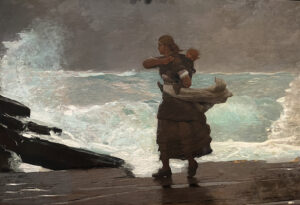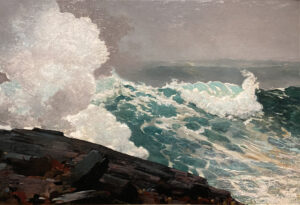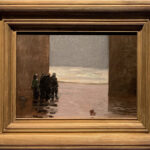National Gallery London until 8th January 2023.
I’ve been a Winslow Homer fan for a long time but was long resigned to no one here having ever heard of him, despite his standing as a major artist in the USA.
So, I lost no time booking my ticket when I realised the National Gallery were putting on a major exhibition “Force of Nature” featuring works from his long career.
To quote the National Gallery.
“For the first time in the UK, we present an overview of Winslow Homer (1836–1910), the great American Realist painter. Well known to many but not everyone, follow Homer’s journey from magazine illustrator to sought-after artist in oil and watercolour.”
With more than fifty paintings, covering over forty years of Homer’s career, the exhibition is a lot to take in in one visit. Many of the paintings have travelled from the Metropolitan Museum of Art, New York.
Homer first came to public notice as a war artist in the American civil war which had a massive impact on him. From exploring aspects of war, he went on to paint the lives of emancipated former slaves reflecting the difficulties they faced. He had a deep interest in people living in times of struggle. However, he also painted young society women and children.
He always let his work tell the story, not elucidating if asked for an explanation.
Apart from some early months in Paris, he lived and worked between the USA mainland and the Caribbean, Barbados and Bermuda.
The interlude that has always interested me is the 18 months he spent in Cullercoats, a coastal fishing village in the north of England. It was an artist’s colony, but he stayed through the winter when most visitors returned home. He made many sketches and paintings in his time there illustrating the tough lives of the women. These images also informed his later works.
Through his career he also had a love of seascapes painting the sea in a myriad of moods and the wild seas at Cullercoats added another dimension. He witnessed the life savers rowing out to rescue the crew of the Iron Crown inspiring a major work of his career. Towards the end of his life the sea, a central theme throughout his life became the dominant subject of his art.
The exhibition has a wonderful selection of watercolours and oils which trace the development of his painting style, always with the consistency and development of his colour palette and his attention to light.
It’s difficult to sum up such a huge body of work completed over 40 years, but I loved having the rare opportunity to see all these works together and would recommend a visit.
Michele Summers




